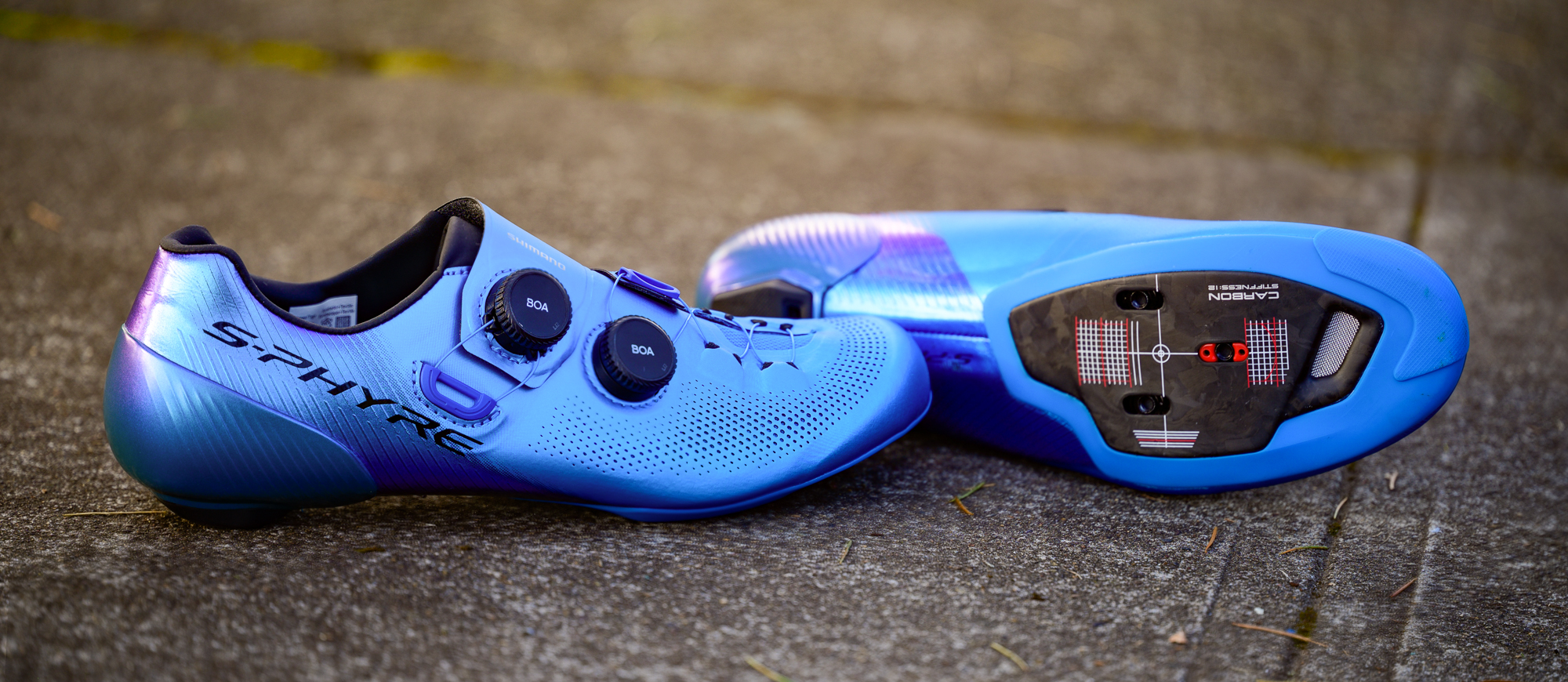Cyclingnews Verdict
The Shimano S-Phyre RC903 is a gorgeous shoe that does a great job holding your forefoot right where it should be. Compared to the previous generation you’ll struggle to find the differences but Shimano has massaged some of the pain points.
Pros
- +
Excellent forefoot retention
- +
Tyre rub toe protection
- +
Beautiful colours
- +
Li2 BOA dials
- +
11mm of cleat adjustment
Cons
- -
The end of wrapped upper is noticeable
- -
Leather-wrapped midfoot can tear
You can trust Cyclingnews
The top spot in the Shimano road cycling shoe lineup is always well-regarded and frequently seen in the professional peloton. The previous generation hit the market two years ago and brought with it extensive changes including an updated fit. Although that detail did take some adjusting for long-time fans, we found it good enough to claim a spot in our best cycling shoes buyers guide. Now, after a season on the feet of Mathieu Van der Poel, Shimano is making an updated version available to the rest of us.
Price: $450.00 / €359.95
Sizes: EU 40-48 (half sizes available 40-46.5)
Weight: 252g per shoe (Actual, size 44)
Colours: White, Blue, Red, Black
The Shimano S-Phyre RC903 does not represent any drastic changes. Instead, Shimano continues to leverage the data gained from the brand's proprietary Bikefitting.com pedalling analyzer as well as feedback from professional athletes and customers. The details have seen small adjustments and new solutions only where needed. That means the same basic questions remain.
There's no doubt that anyone looking for a top-shelf summer road cycling shoe definitely has Shimano on the shortlist. We've spent time riding in a variety of situations to find the strengths and weaknesses of this latest option from Shimano. Keep reading to see if the S-Phyre RC903 is the right shoe for your riding.
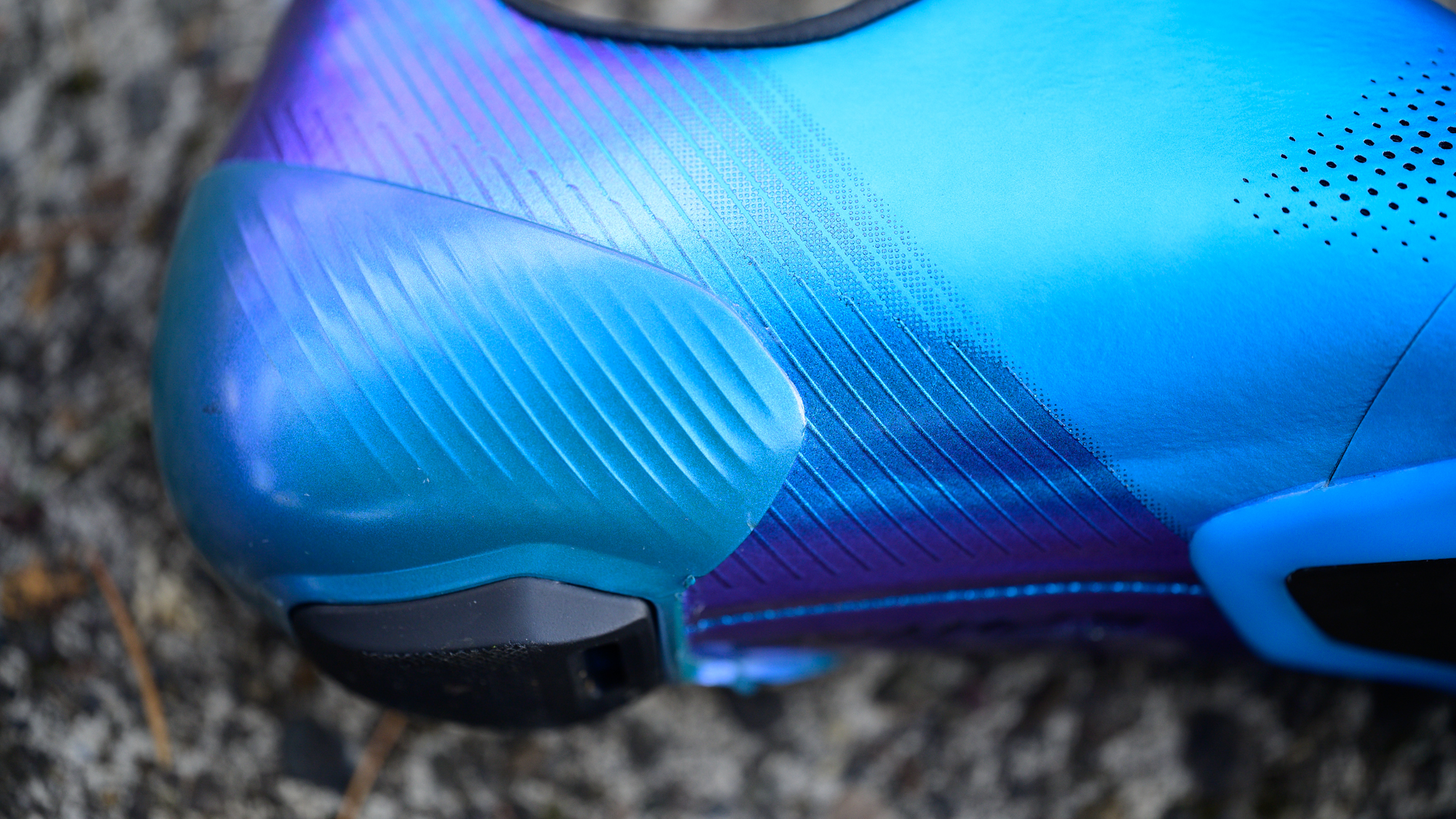
Design and aesthetics
There are times when writing the section about aesthetics in a review is a joy. This is one of those times. The Shimano S-Phyre RC903 is a gorgeous shoe as long as you don't mind standing out. Shimano doesn't use fancy colour names and instead lets the red, black, blue, or white do the talking all on their own.
Even in pictures, you can see that if there was ever a time a brand should use a fancy colour name, this is it. The options are vibrant and rich with pearlescents in some spots and metallics in others. There are textural shifts and every stitch and detail looks purposeful. There's also a monochromatic style that is almost straight out of an art school colour theory class.
If you recall the previous generation shoe, most of this isn't totally new. There are some updates though. In the iconic Shimano blue, the same metallic hue covers the bulk of the centre but now it extends all the way across the toe box. At the same time, the use at the heel has actually decreased a bit. As you move backwards there's now a gradient shift into a slightly darker hue with a series of lines and a pearlescent colour shift mixed in. The colour and lined texture also continues into a slightly revised external heel cup to finalise the rear of the shoe.
While many brands choose to integrate the plastic support below the outer skin of a shoe, it's a point of pride for Shimano. The brand specifically calls out the feature as a way to limit twisting of the foot during high-cadence, or high-torque situations. The upper portion of the heel supports that further with an opening narrow enough that there's no need for extra grip beyond thick padding.
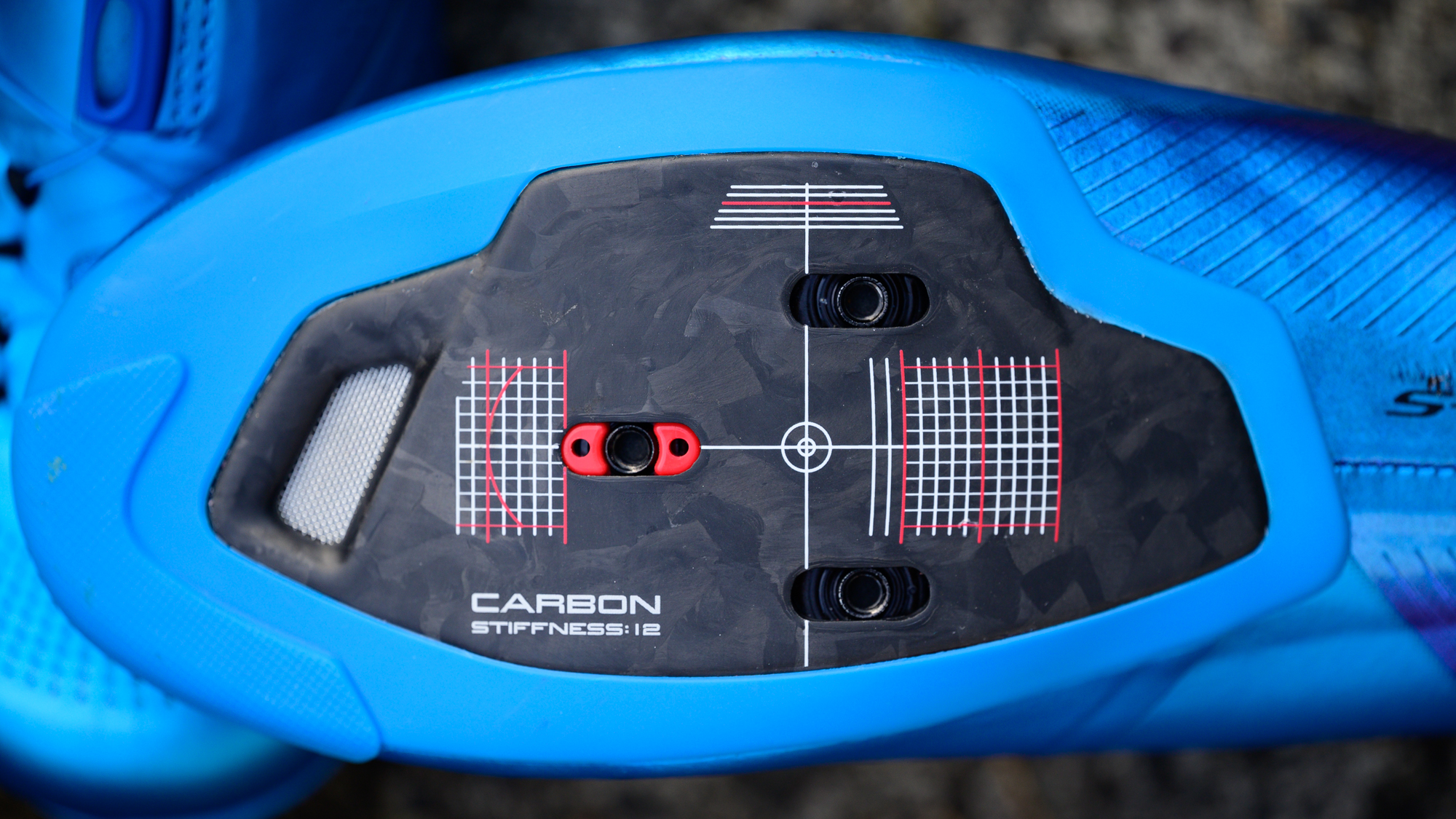
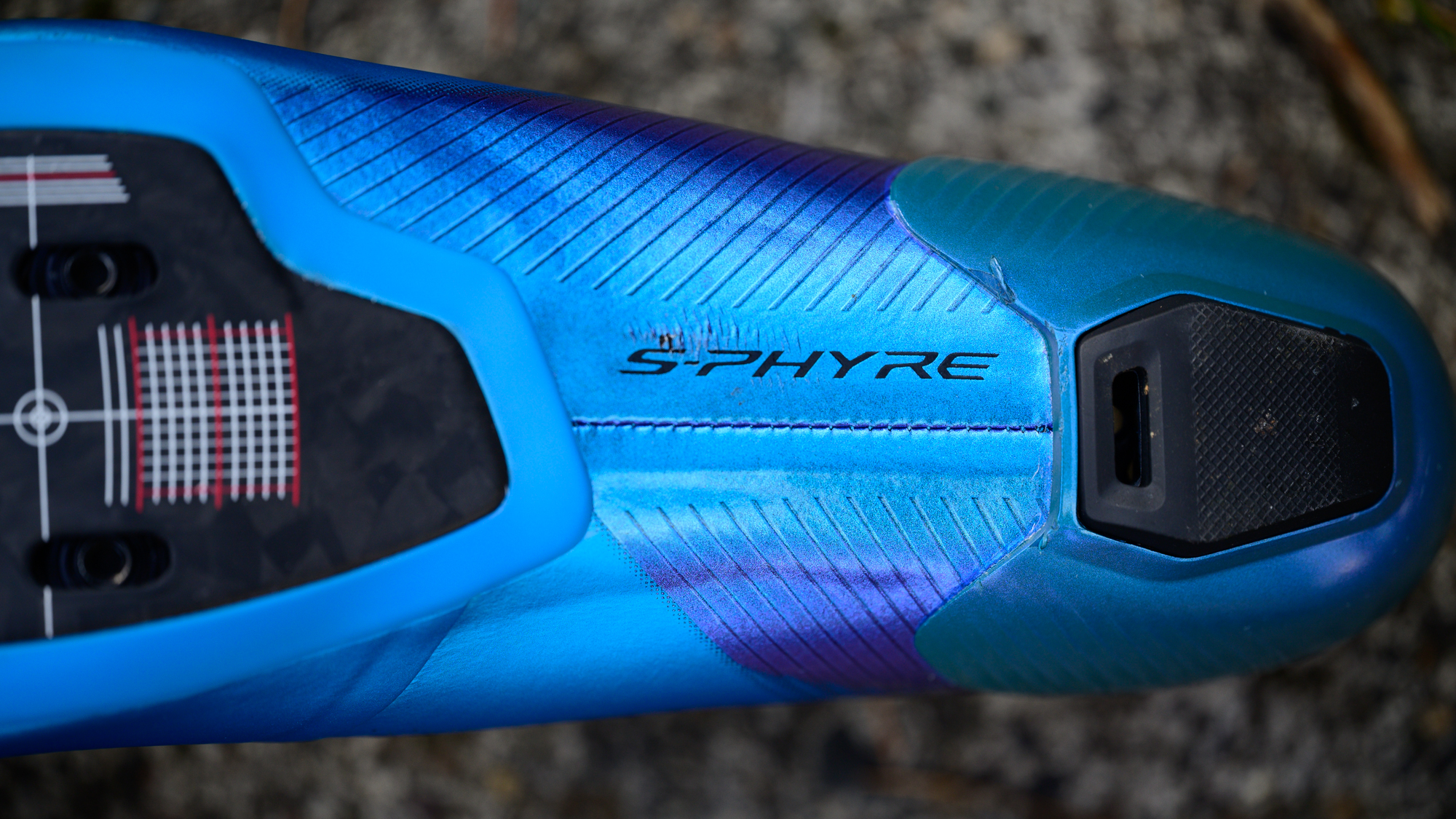
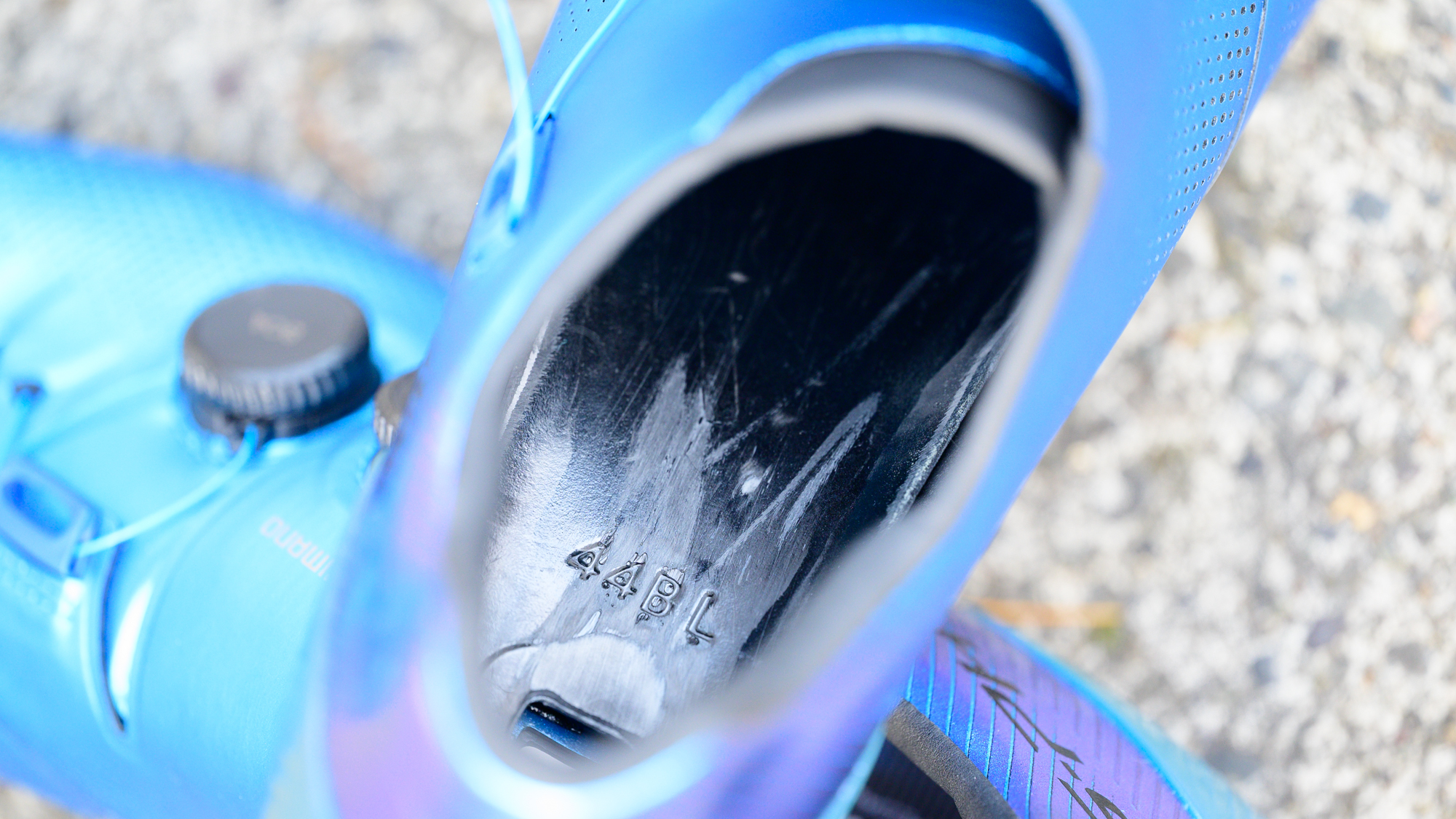
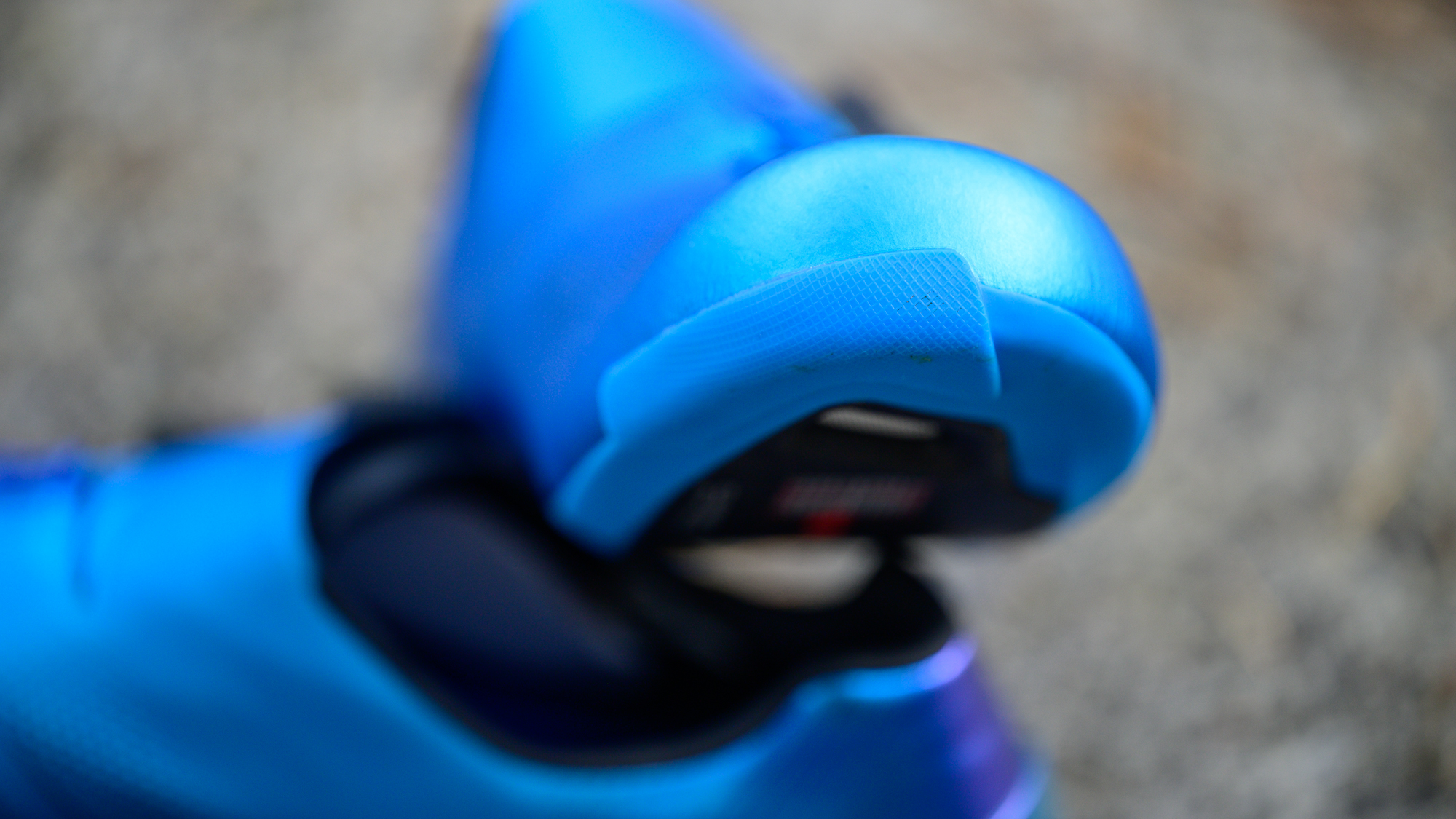
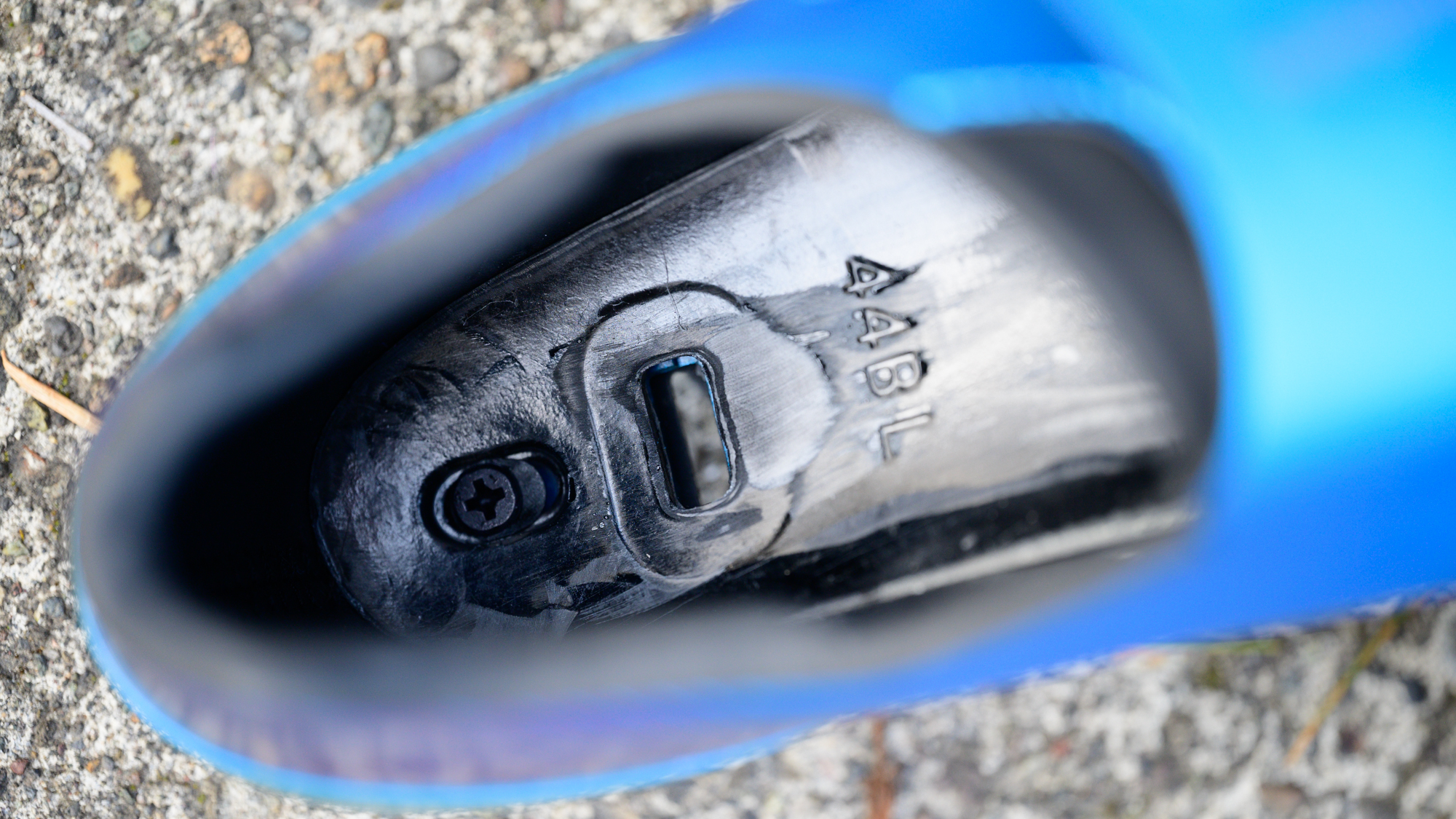
As you move down to the bottom of the shoe, Shimano actually reverses the trend at the heel. While many brands have the carbon on full display, Shimano almost completely hides it. The replaceable heel pad sits proud with the heel cup surrounding it then, where you would expect to see carbon, you instead find the reinforced micro-fibre leather wrapping coming together in a centre stitch line. It's not until you move to the forefoot that Shimano's stiffest available sole starts to show.
Even at the forefoot, the appearance of carbon is rather limited. If you pull the insole you can see that the entire bottom of the shoe, even more than many brands, is solid carbon. Externally though, there is a decorative weave under the cleat mounting position that extends around the front vent and not much else. Further limiting the carbon you see is a colour-matched plastic which, to the credit of some smart designer, extends over the front of the toe to protect against tyre rub.
While there are many details that see Shimano following a different path, the adjustment system isn't one of them. Shimano was one of the first brands to use the BOA Li2 dials but at this point, many brands have now followed suit. The Li2 sits at the top of the BOA offerings and they appear on a variety of high-end shoes. It's not always a given but the Li2 shows up when performance comes first. Compared to other BOA dials, the Li2 has the smallest adjustment per click and adjusts both forward and backwards. They also pop to unlock and pull the wire from both sides simultaneously.
Though Li2 dials are somewhat common at this point, Shimano does manage to use them in a unique way. Instead of two sides of a shoe meeting in the centre, Shimano uses a single piece of fabric. It's cut and wrapped around the shoe and the outside sits under the opposite side with BOA dials pulling everything tight. The upper BOA handles a wide strip of fabric that effectively becomes a strap across the upper part of the foot. The lower BOA adjuster then takes care of the lower section of the foot with a back-and-forth pattern that extends towards the end of the toes. Compared to the previous generation, this section of the shoe sees a new lacing pattern and the removal of plastic cable guides.
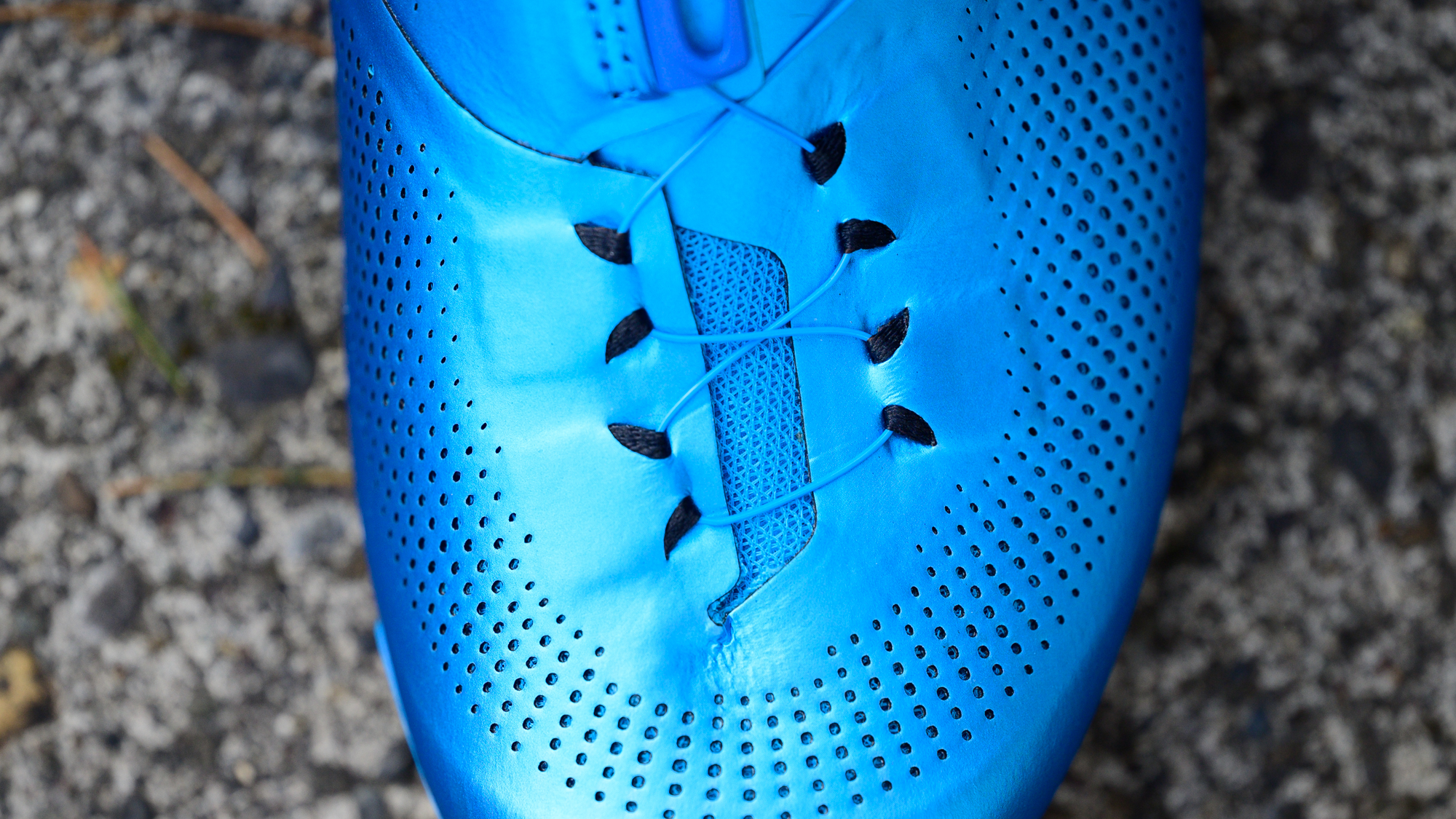
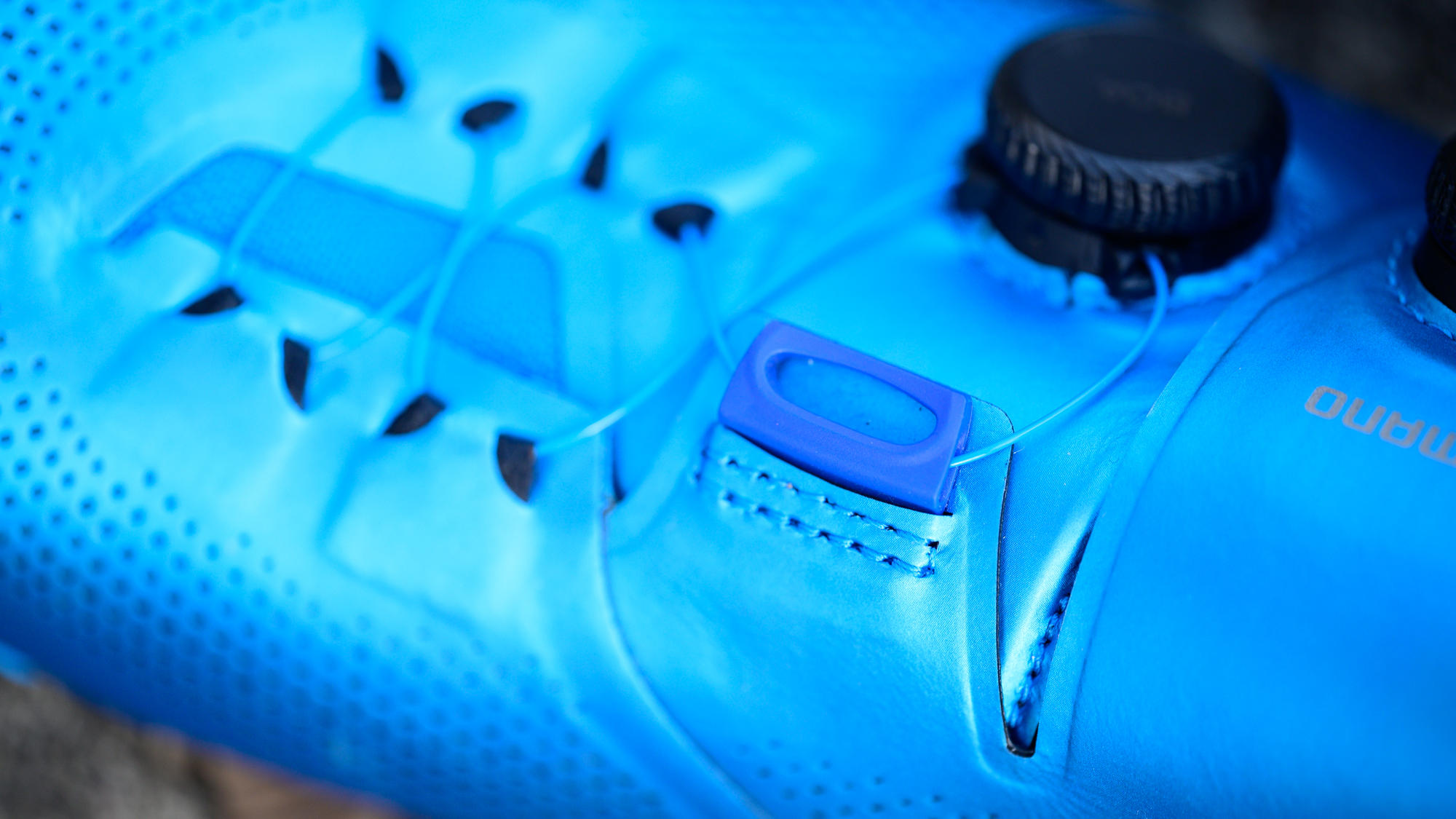
Performance
Over the time I've been riding a bike, I've encountered a lot of love for Shimano shoe offerings. The brand is a frequent recommendation for almost every style of shoe they offer. When it comes to the road shoes, I also absolutely love the style. Just in case it didn't come through above, Shimano blue brought to life in a cycling shoe is a thing of beauty.
As I was reviewing these though I struggled a bit to pick out how the Shimano S-Phyre RC903 stands out from the competition. There are certain things that are an easy win, you can mark the BOA Li2 dials in that category. I have little time for style over substance and high-end cycling shoes shouldn’t get anything lower in the BOA portfolio only for the sake of style. Otherwise though, in a sea of ultra-stiff and comfortable road cycling shoes, what is truly different?
One thing that contributes to that feeling is the small differences between the RC902 and RC903. It's easy to feel a little jaded when a shoe that essentially feels perfect gets a replacement with only subtle upgrades. Externally, the two shoes are so close you have to see them next to each other. There are some big differences internally though. In the toe box, you will find more space vertically and a rounder profile.
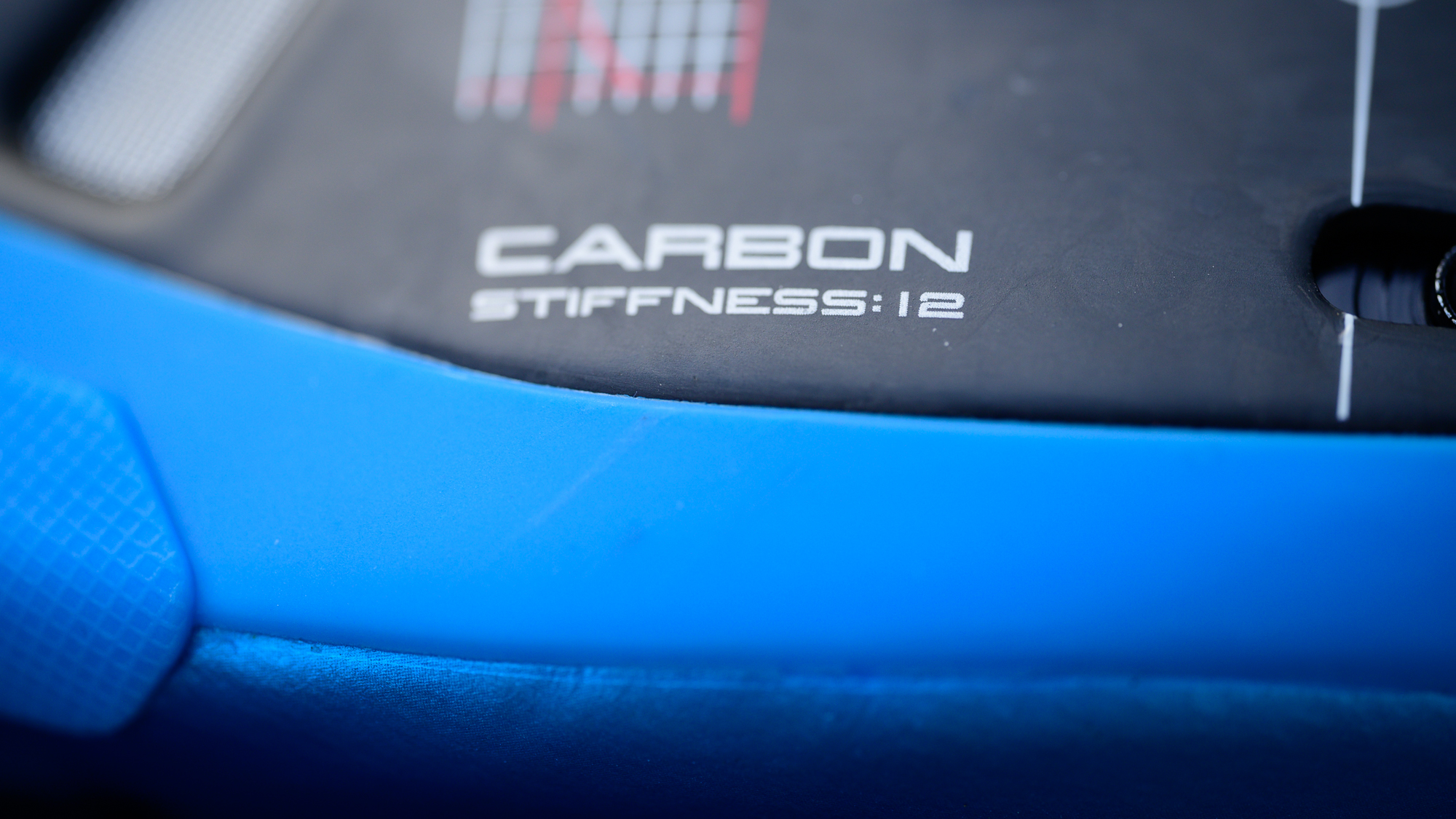
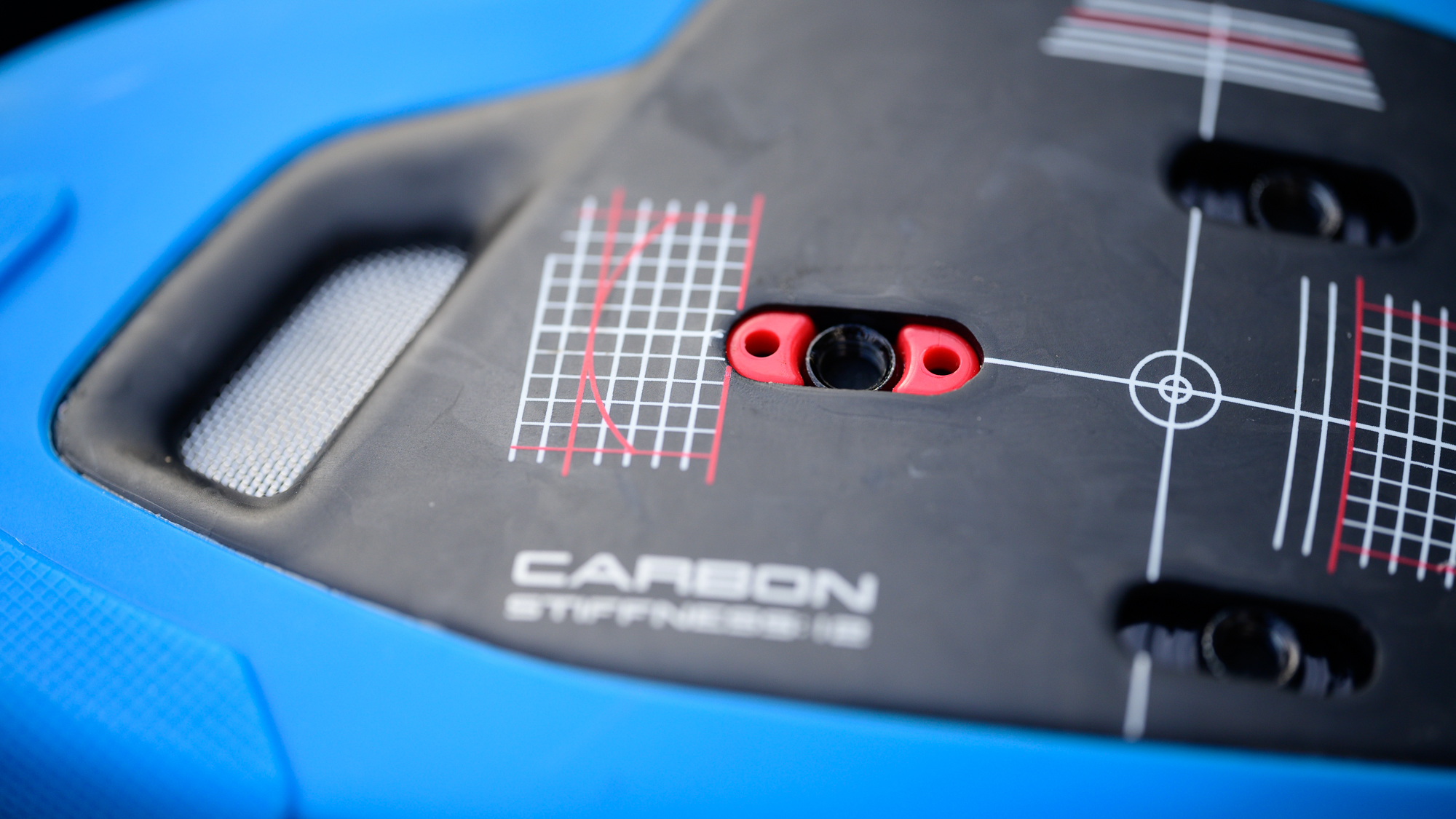
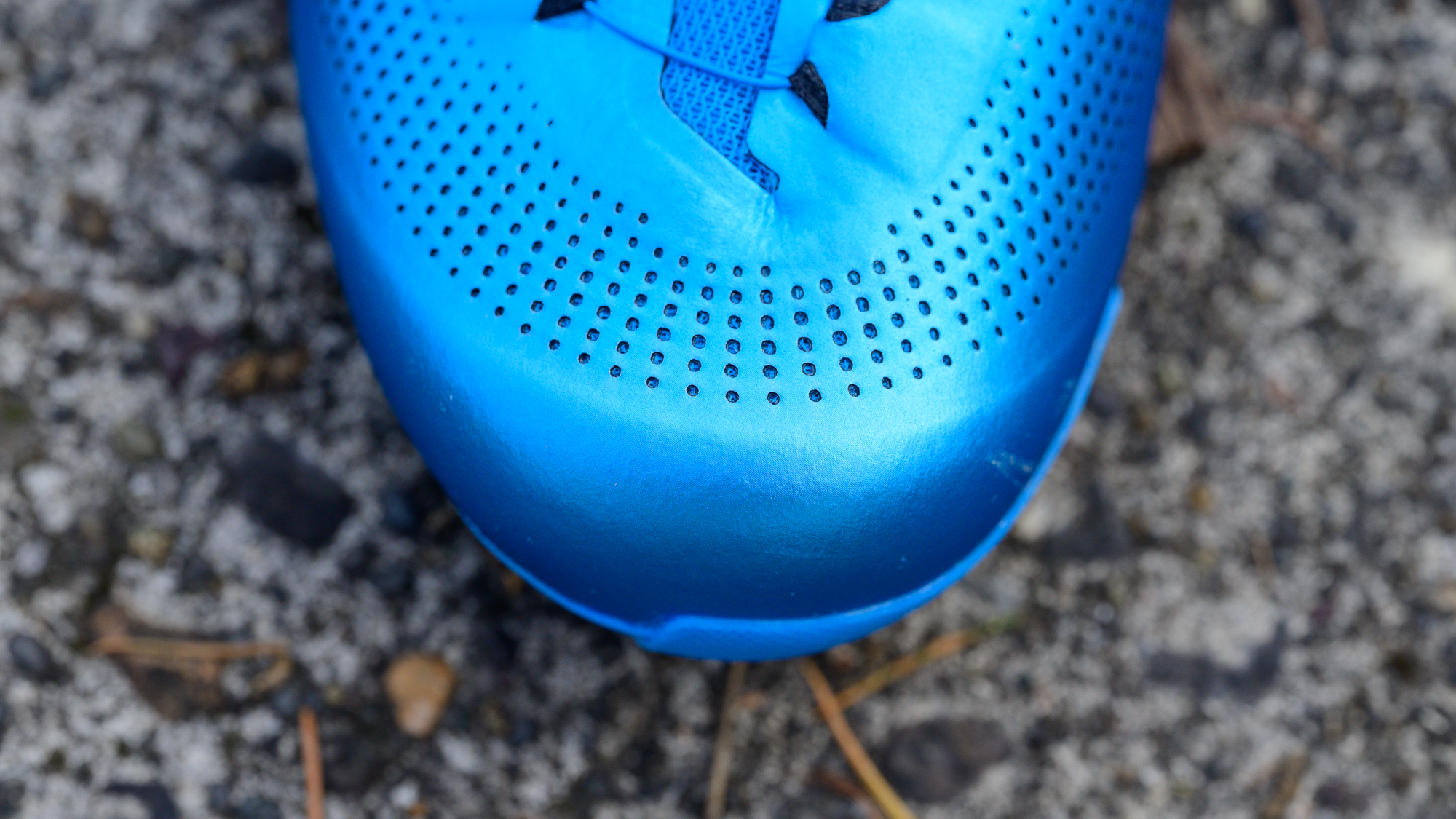
I'm not sure anyone has ever complained about more room in the toe box so, I'll call that a win. I didn't actually notice it though. Instead what I noticed was that the changes to the lower BOA lacing do a great job of holding the front of your foot in place. Part of what makes that work though is the extra space. It's a better overall system and you can really notice the way it keeps your toe from feeling crammed into the front of the shoe during long rides.
The other very noticeable thing about the Shimano S-Phyre RC903 is how precise they feel when climbing. As you press down on the pedal it feels like a very direct connection between the cleat placement and the forefoot. If you are thinking this could easily turn into an issue, that's true but it didn't in my time testing. Instead, it's the best kind of dancing on the pedals feeling.
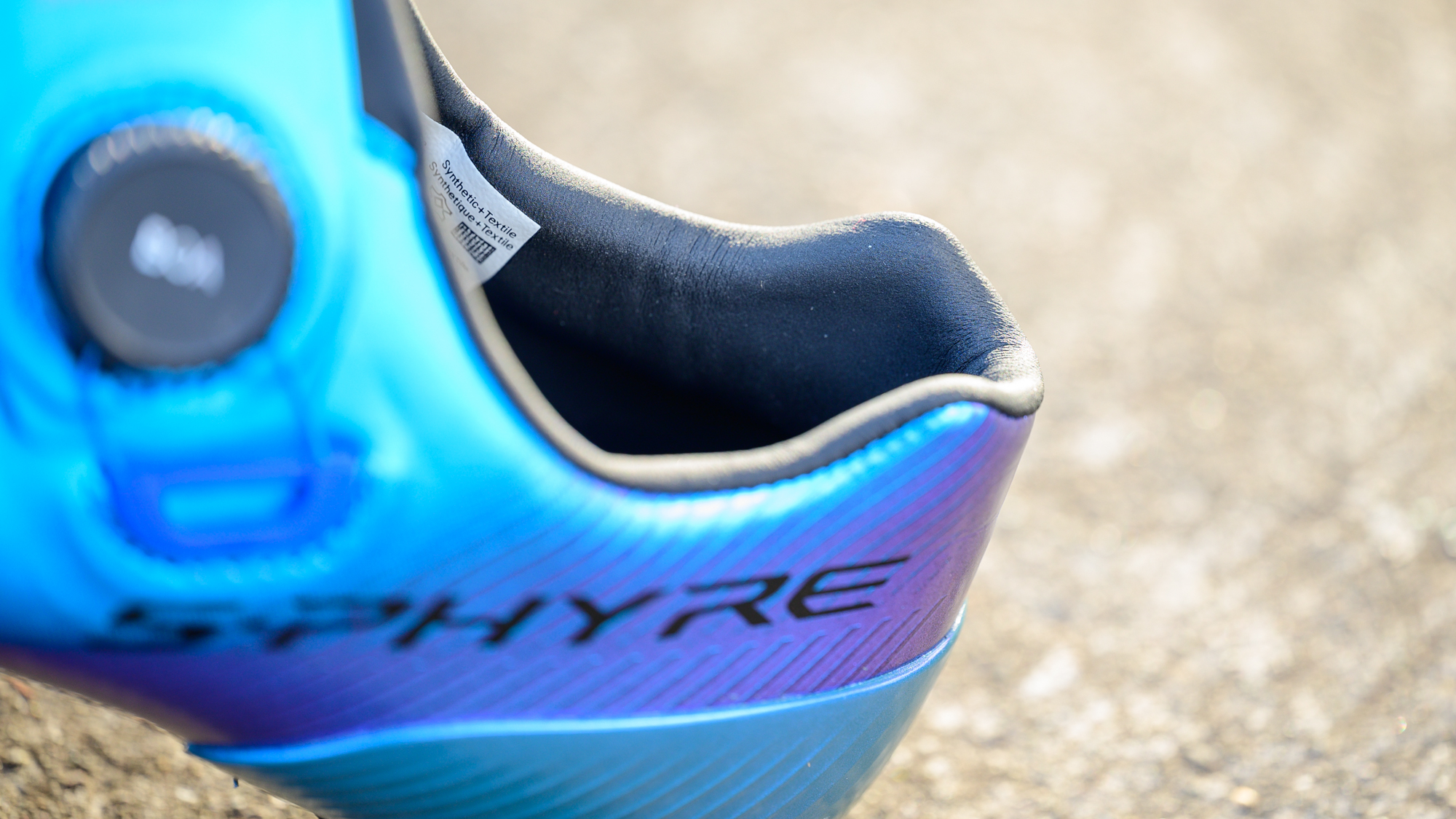
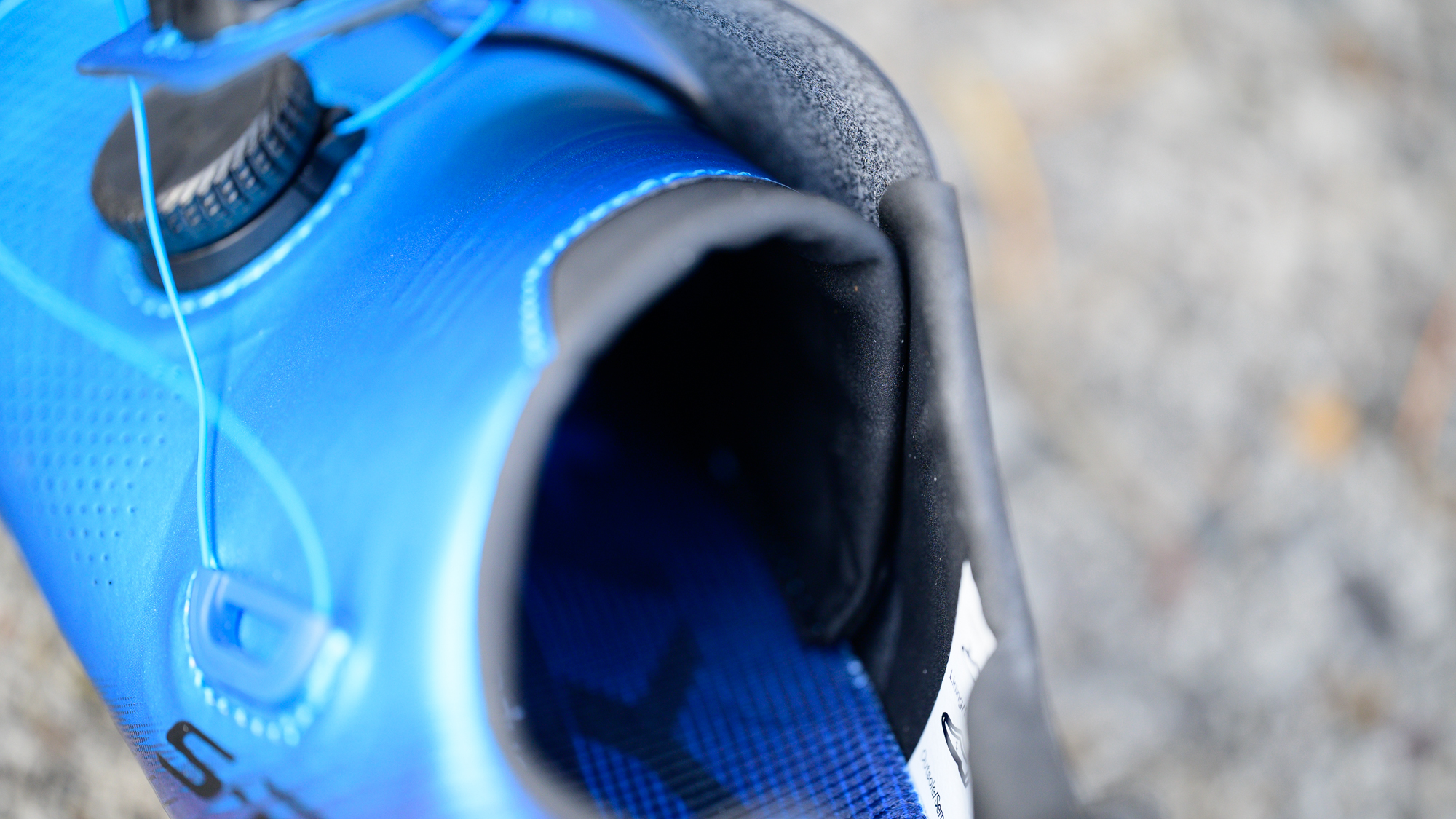
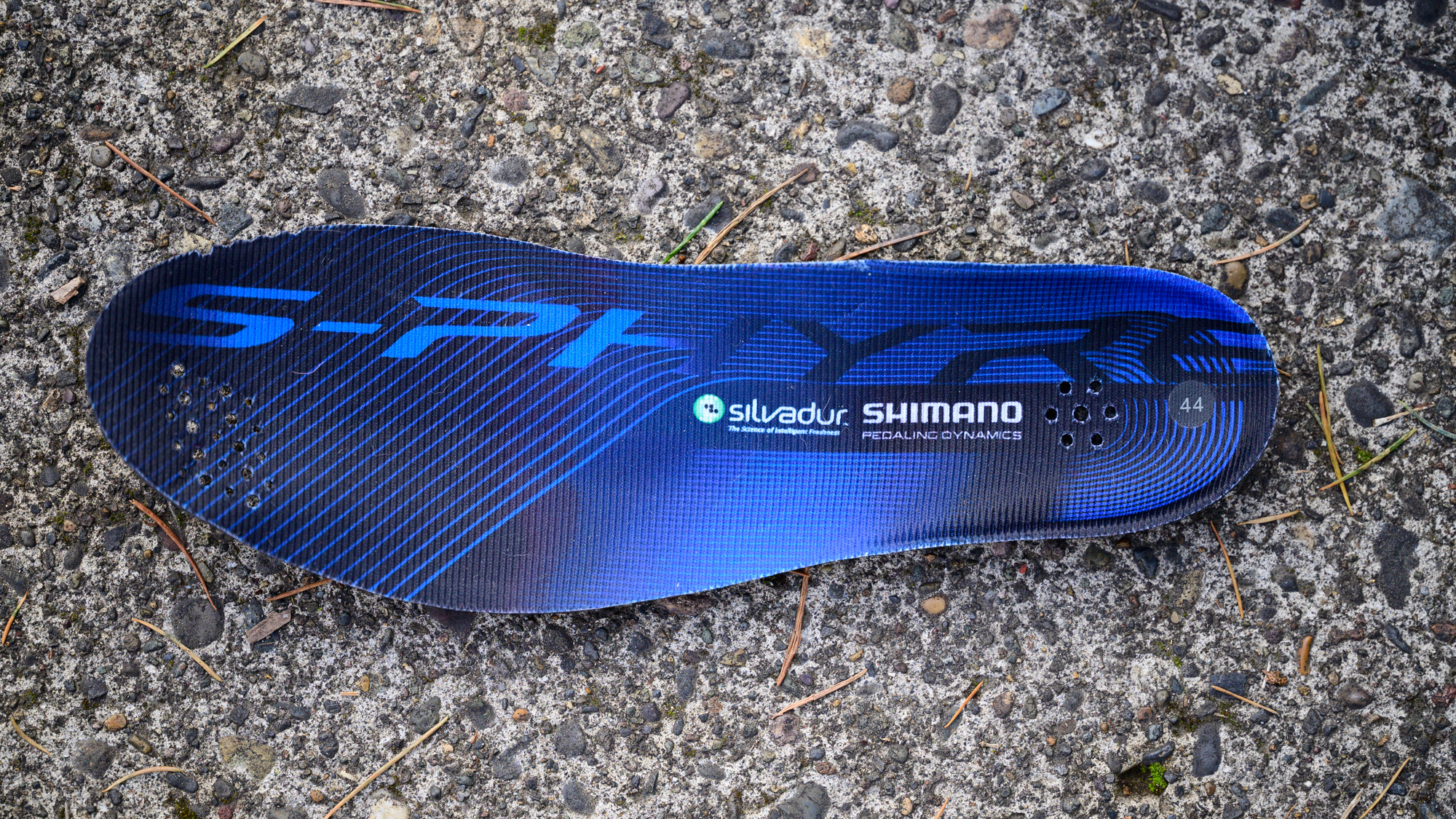
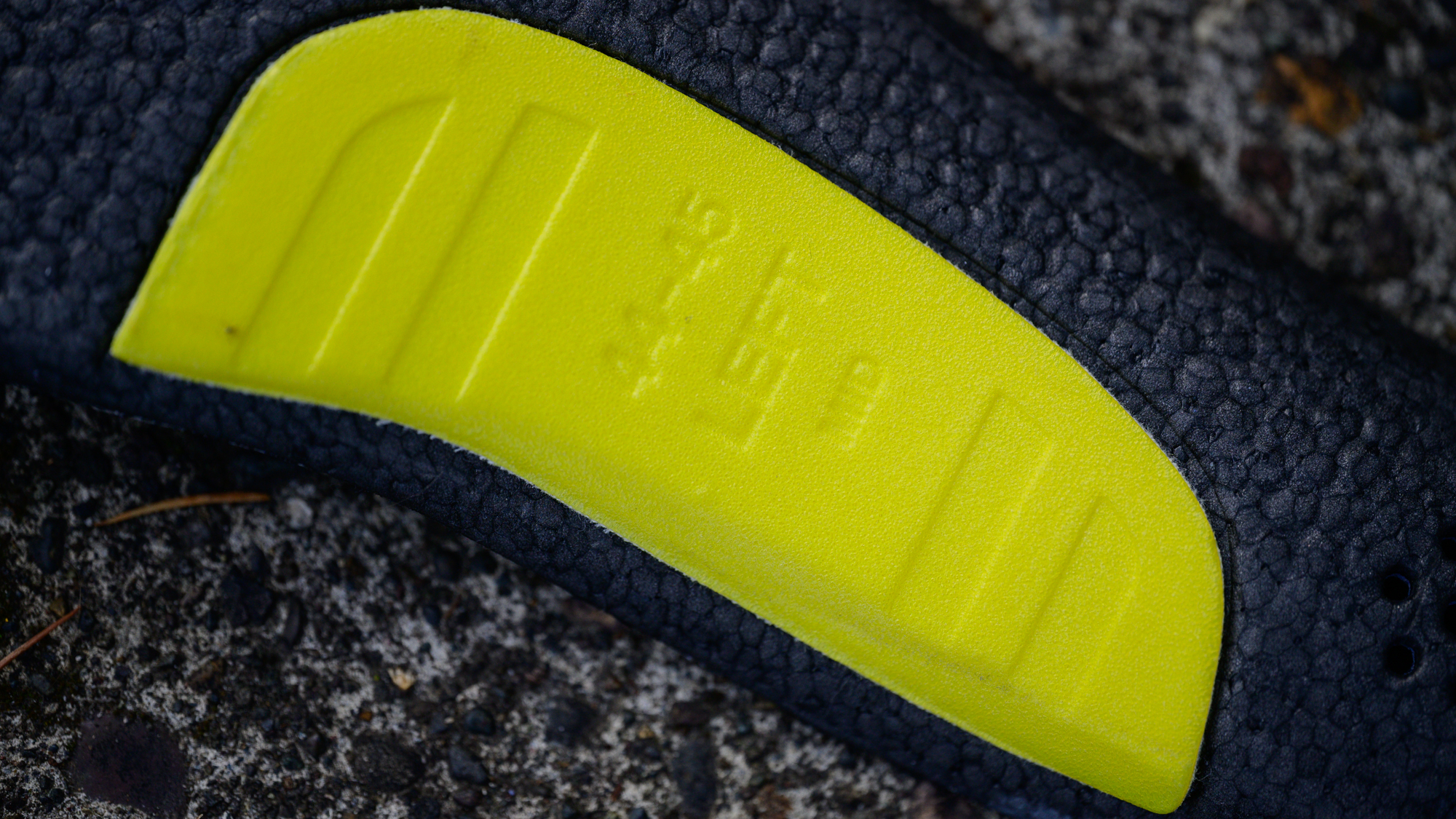
Verdict
Shimano is a huge brand that has made excellent shoes for years. Not only do the designers have experience on their side but being able to leverage a huge database of bike fit numbers has to be helpful. It's also unlikely to be a bad thing to have any number of incredible WorldTour athletes wearing your shoes and giving feedback. Add it all up and it would be a huge surprise if Shimano shoes were anything less than fantastic. The brand has an obvious tailwind and I don't think I'll be surprising anyone by telling you that the latest Shimano S-Phyre RC903 is an amazing shoe.
Despite that, there are little details that could push you in one direction or the other. As much as I like the precision of the Shimano last, there are a lot of brands that do an even better job. Rapha, Giro, and Fizik all have a narrower midfoot and give even more of that dancing on-the-pedals feel. If you prefer wide though, Specialized is wider still and does a better job at the top of the foot where I can sometimes feel the underlayer of the wrapped upper in Shimano shoes. It's also worth noting that I'd rather scratch a carbon sole than rip the leather covering it.
On the other hand, Shimano has some solid strengths and this latest version has taken them even further. Specialized might be wider but the Shimano S-Phyre RC903 has more vertical volume in the toe box. These shoes also do a much better job holding my foot in place. The closest competitor is probably the Specialized S-Works Ares but Shimano has an easier cleat adjustment system, with more movement, and a lot more style.
| Design and aesthetics | Absolutely gorgeous shoes but wrapping the outer over the sole is style over function. | 8/10 |
| Comfort | Very good but if you have a prominent bone on the inside of your foot above the arch the end of the wrapped upper may be an issue. | 9/10 |
| Performance | Stiff but not too stiff carbon outer, precise Li2 adjustment, and excellent midfoot stability. | 10/10 |
| Weight | Lighter than many but not the lightest out there. | 9/10 |
| Value | Top shelf shoes and priced as expected. No surprises here. | 8/10 |
| Overall | Row 5 - Cell 1 | 90% |
Josh hails from the Pacific Northwest of the United States but would prefer riding through the desert than the rain. He will happily talk for hours about the minutiae of cycling tech but also has an understanding that most people just want things to work. He is a road cyclist at heart and doesn't care much if those roads are paved, dirt, or digital. Although he rarely races, if you ask him to ride from sunrise to sunset the answer will be yes. Height: 5'9" Weight: 140 lb. Rides: Salsa Warbird, Cannondale CAAD9, Enve Melee, Look 795 Blade RS, Priority Continuum Onyx
